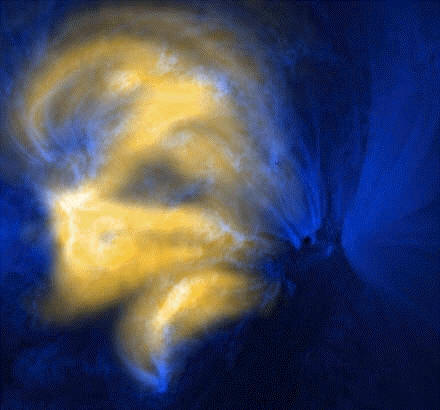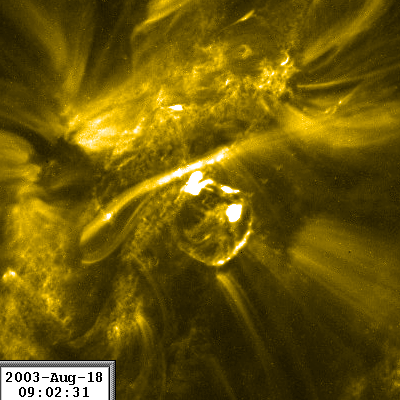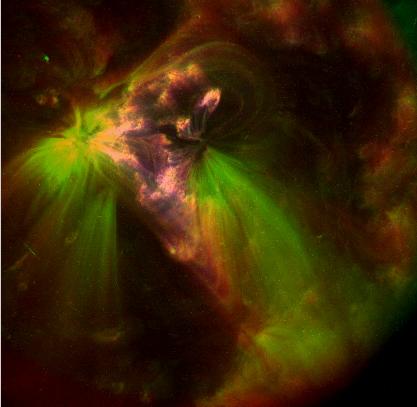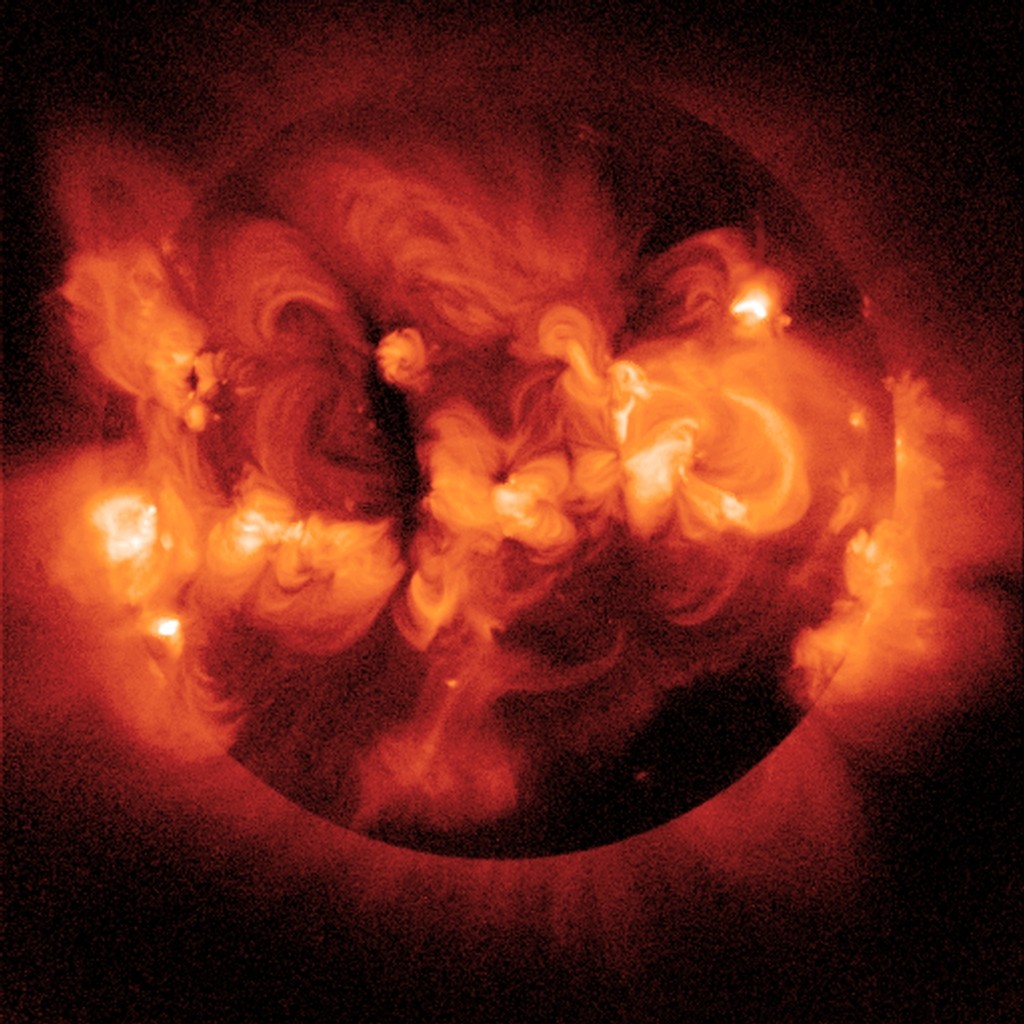Solar Moss: The Smoking
Gun
Solar Moss activity turns
out to be the smoking gun that demonstrates conclusively that the sun is electrically active.
The solar moss activity occurs at the sun's surface.
Powerful electrical discharges in the solar atmosphere rip, tear and eject pieces of the solar crust
from the surface. These parts of the crust are vaporized by the electrical
discharge and form into a
millions degree coronal loops which scientists refer to as solar moss
activity. NASA and Lockheed-Martin announced in
December of 1999
that they had discovered a new phenomenon near the sun’s surface, which they
termed “solar moss”.
"With this discovery, we are beginning to
resolve the Sun's mysterious transition region, a thin region in the solar
atmosphere where the temperature soars from ten thousand to millions of
degrees," said Dr. Thomas Berger of the Lockheed-Martin Solar and Astrophysics
Lab (LMSAL), Palo Alto, Calif. "We are excited because this discovery offers us
a new way to study the mass and energy flows in this region. It also helps us
understand how the large magnetic loops in the Sun's outer atmosphere, the
corona, form out of the highly intermittent magnetic fields on the Sun's
surface. Studying the solar moss may ultimately shed light on the long-standing
problem of how the corona is heated to million-degree temperatures."
This ”mysterious transition region” becomes
a lot less mysterious if we simply recognize that
this layer is a solid surface
that is being eaten away by the electrical flow passing through it. The
electrical current heats up ferrite pieces of the surface to millions of degrees
as they are torn away and carried into the particle stream from the core
emitting photons in the ferrite ion spectrum as they go.
If you have ever used an arc welder before,
you know that the temperature at the business end of the welding rod soars
wherever the arc touches and the current flows. The electrical arc heats up the metal surfaces at BOTH ends of
the arc, allowing us to weld two metals together. These are the primary
electrical forces we are witnessing, nothing more exotic than a simple arc weld
from a solid surface. The “mysterious transition region” is a lot less
mysterious if we allow for a simple change in our thinking and we choose to
believe what we see with our own eyes. Solar Moss is simply a surface
discharge phenomenon.
As you watch
this video of a solar flare,
notice the stream of arcs that flow between two distant points on the SURFACE of
this “mysterious transition layer”. To remove the mystery, all we need do is
accept that this transition layer is a solid and electrically conductive
surface. Once you accept this premise, it’s easy to see the arc eat away
at both ends of a solid surface. The electrical flow is burning away at
these points and heating up the base of the photosphere in the process. As
it does this, it heats the plasma of the photosphere, pushing it to the surface.
Once this rising plasma “pokes through” the layer of the chromosphere, its own
weight usually forces it back down. If the surface is entire eaten away, large
cracks open up, and a solar flare will occur. These surface cracks can span
almost half the surface of the sun as we see in the sunquake video from January
5th 2001.
If we superimpose the Yohkoh's view of these
mossy surfaces (2nd photo) we can also see that these flowing arcs emit hard and soft x-rays all the
way into the corona. Yohkoh's view of space demonstrates that these arcs may contribute at least in
part to the sun's overall fusion output, particularly near the base of the most
active areas. If we look at the sun
through the eyes of Yohkoh, we can see evidence of high energy emissions happening all
throughout the corona. The forth photo is a
close-up taken of the surface looking at multiple spectrums in different colors
representing 171, 195 and 284 angstroms.
Regardless of the spectrum in question, the solid and sharp features of the
rigid and angular surface structures are clearly visible, and the emanation points for each
of the energy flows
in each spectrum begins at exactly the same point on the surface. This
structure is far to rigid to be made of the same materials as the material of
the photosphere. It behaves more like a solid that a liquid and it emits
photons consistent with various iron/ferrite ions.
If we look at the sun through the eyes of
Yohkoh, we can see evidence high energy emissions happening all throughout the corona
emanating from the electrical arcs coming from the surface, and extending all
the way into the corona. These electrical reactions release plasma that
builds up along the lower regions of the surface, usually in the northern and
southern polar regions.
Sometimes this layer peels
off the surface in massive coronal discharges.
| 



